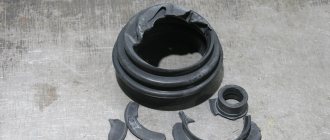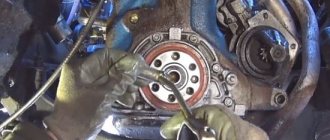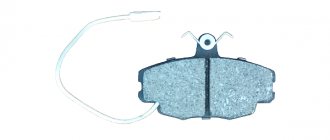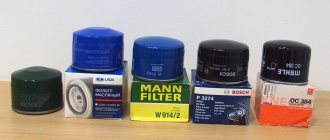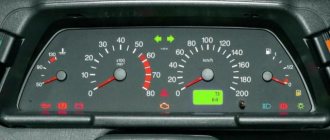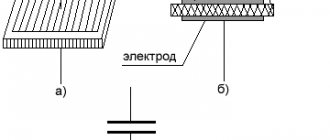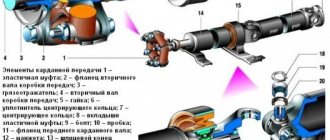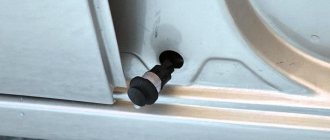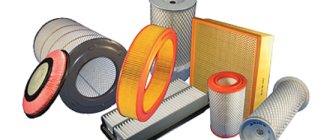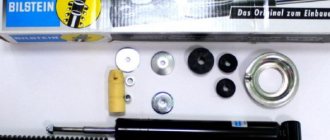This procedure is very simple and does not require special skills. A visual inspection for breaks, cracks and lubricant leaks is sufficient. To do this, you need to turn the front wheels of the car in either direction and carefully inspect the rubber dust covers. If any damage or lubricant leakage is detected, the covers must be changed as soon as possible.
Otherwise, the drive shaft (CV joint) of the car will quickly fail.
Replacing the CV joint and boot on a VAZ-2109 - what is needed for this and how the replacement is carried out
Hello, dear car enthusiasts! Greetings to all car enthusiasts, happy owners of the VAZ “Nine”! With the start of VAZ's production of eighth and ninth series vehicles, a change in priorities occurred on the domestic passenger car market.
The rear-wheel drive “classics” now have worthy competitors, whose chances of getting higher positions in the sales rankings increase every day.
A more modern design, an economical and dynamic engine and, of course, front-wheel drive, became the distinctive features that allowed the new models to become the object of dreams of thousands of car enthusiasts.
The new car required car service technicians and their owners to gain knowledge and completely new skills in repairing components that were not found on previous models. One of the most mysterious parts that is often a dead end is the VAZ 2109 CV joint.
CV joint 2109 – the basis of front-wheel drive
Thanks to the fact that the front wheels became the drive wheels, the “Nine” gained excellent maneuverability and significantly reduced fuel consumption. For all good things, sooner or later you have to pay.
The ability for the front wheels to be driven was given by a special device - CV joint 2109. Constant velocity joint - this is how the mysterious set of letters is deciphered.
Internal CV joints of the VAZ 2109 transmit rotation from the gearbox to the axles, at opposite ends of which external CV joints are installed. They are the ones who spin the wheel and allow it to turn.
The importance of CV joints cannot be underestimated. In this regard, it is important to constantly take care of their condition.
Constant operation of a car requires, in relation to CV joints, the implementation of several simple rules, namely:
- periodically inspect the condition of the CV joint boots and internal lubrication;
- immediately replace the VAZ 2109 CV joint boot if it is damaged;
- If such signs as impacts or “crunching” of the CV joint appear, the CV joint must be immediately replaced with a VAZ 2109.
What is needed to independently replace the CV joint on a VAZ 2109?
In order for the repair work to go smoothly, you need to be properly prepared. It should be noted right away that it is only at first glance that replacing the VAZ 2109 CV joint boot or the hinge itself (both external and internal) seems like a difficult undertaking.
Having carried out the procedure of replacing the CV joint or boot once, any car enthusiast will be able to repeat everything, as they say, with his eyes closed.
Preparation for CV joint repair includes the following steps:
- purchasing a new CV joint, boot, lubricant, clamps and other accessories, which, as a rule, are included in one repair kit;
- the car is installed on an overpass or inspection hole, but in addition, a jack and “goats” should be prepared for the safety of the repair work being carried out;
- You should have a set of standard tools on hand, including: socket wrenches with extended handles or attachments, a hammer, brass or wooden spacers.
You need to start by putting the car on the parking brake and fixing the rear wheels with stops. After the hub nuts and wheel bolts are loosened, the front of the car is raised and placed on racks so that the wheels are suspended.
The wheel must be removed, as well as unscrew the hub nut and remove the lock washer. The preparation ends by unscrewing the two bolts securing the lower ball joint to the steering knuckle.
How is the outer CV joint of a VAZ 2109 replaced?
Before we begin describing the repair process, we note that regardless of whether it is necessary to replace one CV joint or both, and also how many boots need to be replaced, the shaft with two CV joints must be removed.
First, let's look at how to do this. Having turned the hub using the steering wheel, using gentle blows through the spacer, knock out the axle shaft of the outer CV joint from the splined joint of the hub.
Then, using a pry bar, you can remove the inner CV joint. All. The shaft with CV joints is ready for repair. If CV joints are removed from both sides at once, it is strongly recommended to insert old hinges into the gearbox mounting sockets so that the gears do not move.
For convenience, the shaft is clamped in a vice. Now you can remove or cut off the old boots and lightly hit the CV joint body with a hammer to remove it.
Which CV joint boot is better to install on VAZ 2110-2109, 2110
First of all, the outer boot must be suitable in size if we are not buying an original one, but an analogue. The dimensions of the VAZ boot are as follows:
It is also important to pay attention to the material from which the boot is made. Silicone work well , they are easy to distinguish by their softness, they are often made of unpainted silicone, translucent.
Types of anthers on CV joints and their main weak points
Polyurethane anthers on VAZ are a rather controversial thing. On the one hand, polyurethane is a durable and tear-resistant material. On the other hand, in severe frost they can harden so much that there is a risk of rupture right on the move. It all depends on the composition of the polymer.
rubber boots is also ambiguous, since rubber is different from rubber. If we choose this option, it is better to start with a brand that we trust. And a little about brands.
NTN-SNR, France
Definitely recommended for purchase. Made of polyester (PEEST marking), it has an interesting design feature - fillets are made between the corrugations to remove the load from a specific corrugation and distribute it evenly over the entire surface. The catalog number is the same as that of the branded VAZ boot - 2108-2215030. The resource is more than 150 thousand km , it is not afraid of frost and high temperatures.
HORS, RF
Sold in branded packaging, made of red-painted silicone. The packaging indicates a 1-year warranty; it responds well to severe frosts, but the total resource does not exceed 8-10 thousand km , depending on operating conditions. 2108-2215036 is indicated on the case body .
TRACK, country of origin unknown
Made of transparent silicone, packaged in a blister with a sticker stating a one-year or 40 thousand km warranty. It is absolutely not afraid of frost, it will last more than 50,000 km , if it is not a fake. The specified catalog number is 2110-2215030.
BRT, RF
Made of black material, chloroprene rubber. Indifferent to frost, service life at least 40,000 km . Sold without packaging, all information is embossed on the case, catalog number 2110-2215030 .
Trialli RG 0130, Russian Federation
Made of black chloroprene rubber, packaged in a bag with a sticker, logo and factory catalog number 2108-2215030. Judging by the reviews, it has performed well, is not inclined to become dull in the cold, users estimate the average resource to be within 30-40 thousand km .
TSN 3.2.1, China
It makes no sense for replacement, since the resource under normal conditions is no more than 2,000 km. True, it is sold complete with good clamps and lubricant for the CV joint. Marked with serial number 2108-2215030.
There are also a number of domestic and Chinese anthers that correspond to the factory catalog numbers, but you can buy them at your own peril and risk if you do not trust the VAZ cover.
Replacement
If problems arise with grenades, you should determine which ones have problems. Next we will look at how to change the drive and how to remove it. Additionally, we recommend watching the repair manual video.
The procedure for replacing inner and outer CV joints differs from each other, therefore each stage should be considered separately.
Let's start with the internal.
Inner CV joint
Rubber boots are a vulnerable element of the grenade design. It is not uncommon that by replacing the boot, washing the grenade with gasoline and applying new lubricant, it is possible to solve the problem. If the wear of the CV joint is insignificant, such measures can replace a full repair.
But if you discover the breakdown late, you will have to completely replace the inner CV joints.
- Apply the handbrake and install chocks under the wheels.
- Unscrew the hub nut using a wrench and a socket. Carefully remove the punching elements from the nut with a punch. This way you will be able to preserve the carving on the garnet. The nut itself will need to be replaced with a new one during reassembly.
- The main thing here is to unscrew the nut, lowering the wheels to the ground. Otherwise, you risk breaking the differential and other gearbox components.
- Raise the car using a jack on the desired side, first loosening the wheel nuts. Remove the wheel.
- Drain the gearbox oil. This can be done earlier, at your convenience.
- Release the steering knuckle from the ball joint at the bottom. To do this, unscrew a pair of mounting bolts.
- Since you have already removed the hub nut and unscrewed the ball joint from the steering knuckle, proceed to removing the splined part of the grenade. To do this, pull the brake disc and strut assembly towards you. She has a decent ride. Just remember to turn the steering wheel all the way so that the tip of the steering wheel extends as far as possible.
- Pry the inner grenade with a pry bar, which will allow you to remove the drive.
- Having taken out the CV joint, look at the condition of the oil seal in the gearbox. If you find traces of leaks, be sure to replace the element.
The internal drive (CV joint) is designed to work with smaller angles, its boot is less susceptible to negative influences. Therefore, the internal grenade is changed quite rarely.
Outer CV joint
The outer grenade wears out more actively, so replacement is carried out more often.
Under no circumstances remove two CV joints from the gearbox at the same time. Otherwise, it will cause the gear to become misaligned. Remove one at a time or insert special inserts in place of the hinge.
- If you have extensive experience in such matters, it is quite possible to knock out an external grenade right under the car. This saves time and effort. But such a task requires increased attention and caution in actions.
- Ensure that the axle shaft is stationary or has limited movement. If this is not done, the axle shaft will move when the grenade clip is struck with a hammer. Because of this, the inner CV joint will simply come out of contact and split into parts inside the boot. Therefore, you will have to dismantle the unit completely, and this is a very difficult task.
- You can hold the axle shaft with your hands, but a more effective means is a hand vice or a gas wrench. It is better to enlist the support of a partner. This is the best option.
- Take a fairly heavy hammer with a short handle.
- If damaged, cut, turn or move the boot to the side so that it does not interfere with striking.
- The blows should be made sharp, but at the same time careful. There is no point in hitting the element with great force.
- Due to successive blows, the resistance of the locking ring should weaken, which will allow the outer grenade to be removed from the axle shaft.
- Thoroughly treat the seating area with gasoline, clean it with a rag and put a portion of new lubricant into the hinge.
- A new boot is put on the axle shaft and a brand new CV joint is mounted.
Dismantling work
To fix the boot to the axle shaft and body of the new grenade, many use ordinary plumbing clamps. The practice of VAZ 2109 owners shows that they are more convenient and more efficient than standard fasteners provided by the factory.
Changing CV joints is not the easiest task, but this stage cannot be called incredibly difficult either. The main thing is to use high-quality new grenades so that in the next few tens of thousands of kilometers you will forget about them. But they didn’t remind us of themselves.
Disassembling the drive and replacing the boot
The car is driven into a pit, chocks are placed under the wheels, and the car itself is left in first gear.
Before completely removing the wheel, loosen all the wheel nuts.
The protective cap of the nut securing the drive to the hub is also removed.
To prevent the nut from unscrewing from the shaft, it is centered around the circumference, which is why it has bends that fit into a groove made in the shaft.
These bends need to be aligned, this is done with a thin screwdriver or a drift and a hammer.
After aligning the bends, using a socket and a powerful wrench, the nut is unscrewed, and the washer located under it is also removed.
Next, the car is jacked up and wooden stands are placed under its sills.
The wheel nuts are unscrewed and the wheel is removed.
Next, work is done under the car.
If there is a crankcase protection, it can be unscrewed. Then the oil from the gearbox is drained through the drain plug into the prepared container.
Next, you need to unscrew the two bolts securing the lower ball joint to the hub.
This will make it possible for the latter to move sideways. At the same time, you can check the condition of the support itself.
The steering wheel must be turned all the way to the left so that the drive is completely shifted in the inner CV joint, ensuring its minimum length.
After this, the hub is removed from the splines of the drive shaft.
The outside of the drive will be removed.
Then you can go in two ways.
Knock down the outer “grenade” without removing the inner CV joint.
To do this, you need to remove the boot clamps, and then cut the boot, and then wipe off the existing grease on the hinge.
Then you need to prevent the drive from moving on the internal hinge.
To do this, take a small vice or a butt wrench, clamp the shaft in them and hold it firmly in your hands.
An assistant, using a soft metal spacer and a hammer, knocks down the CV joint, striking the inner race of the hinge.
With this method, there is no need to drain the oil from the box. But there is a possibility that when striking, the inner race will jump out of the outer inner CV joint.
Also, shooting down a “grenade” in this way is not very convenient, since this work will be done in a limited space.
Complete removal of the drive from the vehicle. To do this, a pry bar is driven between the gearbox housing and the internal joint and the shaft entering the gearbox is pulled back and forth.
After this, the drive is completely removed.
The advantage of this method is also the ability to assess the condition and replace the gearbox seal, through which oil often leaks.
In the future we will consider work with the drive completely removed.
Causes of CV joint failure
Unlike other cars, it is especially difficult for the VAZ-2109 to keep the grenade boot in working condition for a long period. The main reasons for its failure, first of all, can be unfavorable climatic and external factors. As a result, cracks will form on the parts, and further operation will be impossible. Through the torn mechanism, dust and dirt get inside the hinge, and because of this, the grenade parts wear out. It is not difficult to detect this: when the car is moving and when turning, the car makes a “crunching” sound, and this is already the first signal.
Causes and breakdowns
In reality, the resource of the CV joint turns out to be significantly less, which is caused by operating conditions, poor quality of roads, driving habits and other factors.
People usually call a CV joint a “grenade,” which is due to the external similarity of the element to this explosive device.
Here's what you should know about grenade malfunctions:
- Practice shows that the most common cause of CV joint failure is dirt, dust, and sand that enter the mechanism through a damaged boot;
- Sometimes the problem of a non-functioning grenade can be solved by replacing the boot. This is possible if the CV joint itself has not yet worn out due to exposure to contamination;
- If the damaged boot is not detected in time, the grenade will be completely worn out within literally 200 kilometers;
- If the CV joint fails, a strong crunching sound appears when cornering and accelerating. Such a symptom indicates the need to urgently replace the CV joint;
- The cost of new grenades is quite affordable; they are available at any auto parts store. But you should purchase those that meet the technical requirements of the VAZ 2109;
- If you have at least a little experience in repairing cars yourself, it is quite possible to replace a grenade with your own hands.
Old and new element
Types of CV joints
Before you begin repairs, you need to find out exactly how the unit is designed.
The pair of drives on the VAZ 2109 is equipped with a total of 4 CV joints.
CV joint type
Peculiarities
There are 2 of them. They transmit torque to the axle shaft from the gearbox
There are also two of them. Installed on the ends of the axle shafts and transmit torque directly to the wheels
Outer
This arrangement of grenades allows the wheels to rotate during turns and constant operation of the suspension system. To put it simply, the outer CV joints are responsible for transmitting torque when cornering, and the inner ones are responsible for the vertical movement of the wheels. These are collisions with bumps, holes, roll in turns, etc.
Interior
What parts are needed for replacement?
Of course, a set of CV joints. Which products to choose. decide for yourself, but the most important thing. have all the necessary elements: clamps, fats, hinges, retaining rings. If they are not included, buy them separately, they don't cost that much. In addition, sometimes it is necessary to replace the oil seals of the VAZ 2109 CV connections. But only if you observe oil leaks in the box area. Although if you look at their life, it is better to replace it when you remove the drive. So it will be much more effective.
In addition, you may find faults with some suspension and drive components. For example, excessive wear on the wheel bearing. In this case, it is recommended to replace it. It is also possible that you will find a broken ball joint. And it must be disabled to remove the disk. Instructions for replacing the CV joint on a VAZ 2109 with your own. Replacing the CV joint on a VAZ 2109: play in the drive shaft. Rotate your finger to see if there is a jam. If its movement is jammed, you need to change the ball, otherwise it will start to crack very soon.
Removing the outer CV joint of a VAZ 2109
All work can be carried out without an inspection hole or overpass; all you need is a good jack and supports. The disassembly procedure is as follows:
- Place stands under the rear wheels.
- Remove the cap from the front wheel.
- Unlock the nut using a sharp chisel and hammer.
- Using a 30" socket and a long lever, rip off the nut.
- Remove the four bolts securing the wheels to the hub.
- Place a jack under the side to be repaired and lift it up.
- Remove the wheel. It is advisable to install a support under the body.
- Pull the cotter pin out of the tie rod end pin and unscrew the nut.
- Using a puller, pull the pin out of the steering knuckle.
- Unscrew the two ball joint mounting bolts. This will be easier than using a puller to knock the pin out of the hub.
- The hub now “walks” freely on the stand. Personally, I knock out the inner CV joint using a small chisel and hammer. Literally 2-3 sharp and precise blows, as the drive comes out of the box. But be sure to drain 2/3 of the oil from the gearbox, otherwise you will lose it.
- Knock the outer grenade out of the hub.
You don't have to remove the drive completely, but that's not very convenient. It is much more pleasant to work with grenades if they are accessible and can be clamped in a vice, rather than bending over under a machine. Before replacing the external grenade boot, assess the condition of the entire drive for damage or defects. After all, it may turn out that not a partial repair is required, but a complete one.
Shall we get started?
Before replacing the mechanism, you need to drain all the oil from the gearbox. Let's not touch the jack yet! You need to place a brick under the rear wheel of the car, after this procedure we take the 30 socket and, accordingly, loosen the nut. Don't be alarmed, you may need about a half meter long piece of pipe half a meter long as a lever. Remember, we only need to loosen the nut, not remove it yet!- Everything worked out? Go ahead! We lift the car with a jack, and only now completely remove the hub nut along with the washer. Now you can safely remove the wheel from the hub.
- Take the 13mm head and remove the two bolts that secure the ball to the hub. After this, we move the hub and remove the outer grenade from it. Then we attach a pry bar to the internal grenade and, using hammer blows, knock it out of the gearbox. By the way, if you still don’t have a pry bar at hand, a piece of pipe can replace it.
- When the grenade is removed, we clamp its shaft in a vice.
- We remove the clamps from the unusable boot. After that, we shoot down the outer grenade. Attention! In order not to damage it, you need to hit it along the edge. When this operation is completed, remove all old grease from the mechanism, wash it in gasoline or kerosene and wipe it well again, this way you can better remove traces of grease.
- Now we put a new boot on the drive shaft, and using a hammer we hammer the outer CV joint back, after thoroughly lubricating all the parts of the product. After that, we put it on and tighten it with a collar.
- Then we insert the grenade into the gearbox, driving it there. We place it in the hub and return the ball to its place. We put on the hub nut.
Attention! The hub nut does not need to be tightened with great force. After installing the wheels, tighten the bolts without applying much physical force.
- We remove the car from the jack, place a brick under the front wheel and tighten the nuts tightly.
- Well, now pour oil into the gearbox.
That's all. Congratulations! Replacing the boot on the VAZ-2109 is complete!
Preparation
So, damage to the boot on the VAZ 2199 has been identified. You can replace it and wash the CV joint itself in the garage, the main thing is that there is an inspection hole.
Tools you will need:
- Set of wrenches (socket wrenches, open-end wrenches);
- Set of heads and collars;
- Metal brush;
- WD-40;
- Mount;
- Hammer;
- Jack;
- Wheel chocks;
- Wooden coasters.
You will also need a new boot, CV joint grease-4, a container for collecting oil, a container with gasoline for washing the CV joint, and rags.
It is better to do all work together with an assistant.
For convenience, we will describe the process of replacing the external boot on the left side. The replacement work on the right side is identical.
Replacing external SHRUS
If you plan to replace only the boot of the external CV connections of the VAZ 2109, then at the last stage you just need to pull it and cut off the old one. But if you need to replace the entire hinge, follow the same pattern as in the last paragraph. Clamp the drive firmly in the vise and the hammer will strike the CV joint from it. Don't skimp on it because a new one will last for many years unless your driving style is very aggressive.
As in the previous paragraph, first thoroughly clean the axle shaft, wipe it, and then mount all the elements. First the boot, then the ring, fills the CV seams on the splines. That's all, all that remains is to squeeze out all the lubricant under the rag and put it on, tightening the clamps. Please note that worm type clamps cannot be used, they will rest on the hub.
Drive installation
Finally, the entire drive is installed and the entire suspension side is assembled. First install the inner CV joint. You hit the splines, then give the drive a couple of sharp blows. This will allow the ring to slide in, having previously compressed to its minimum diameter. Please note that the grenade should fit snugly against the box; this is its normal position. But do not forget that the CV joint moves slightly along the wheel axis.
Next, what you need to know about replacing the VAZ 2109 CV joint is the installation of the external hinge. To do this, install it opposite the hole in the hub and, lightly pressing on the latter, carefully insert it. To make sure that the grenade has gone all the way in, you can give a couple of sharp blows to the hub. Just place a wooden beam to soften it. The hub will then be fully seated when you tighten the nut. That's all, now you can assemble the side and proceed to the second.
Drive shaft assembly process:
- take a new dust cover and put it on the shaft;
- we drive the CV joint onto the splines, after filling it with new lubricant;
- put the boot on the bearing and tighten the clamps;
- We install a plastic plug at the end of the inner CV joint shaft;
- Before mounting the drive in place, install a new retaining ring on the inside of the drive shaft;
- insert and snap the shaft into the gearbox by lightly tapping the shaft with a hammer, preferably through the spacer;
- We insert the outer side of the drive shaft into the splined joint of the hub. We put on the thrust washer;
- be sure to install a new hub nut;
- tighten the nut tightly. If you have a torque wrench, the tightening force should be 25 kg/cm;
- We tighten the nut with a chisel, jamming its edge. To prevent spontaneous unscrewing of the nut;
- reinstall the protective cap of the hub nut;
Replacing the outer CV joint of a VAZ 2109 (2108, 21099)
You can replace the outer CV joint (angular velocity joint, “grenade”) on a VAZ 2109 (2108, 21099) without removing the wheel drive.
Necessary tools, accessories and spare parts
Soft metal drift
Key "30" (knob with head)
Key "17" (head or socket)
Pliers (preferably extendable)
Slotted screwdriver or circlip remover
Lada 2109 BadGad › Logbook › Replacing the boot of the outer CV joint (grenade)
Good day everyone, while replacing the brake pads, I came across the boot of the outer CV joint, which was in terrible condition. Naturally, in order not to lose the CV joint, the boot must be changed urgently, which is exactly what I did. As always, for those who know everything there are pictures, but for those who don’t know, I will describe everything. There is nothing complicated in this action, just a couple of nuances. Go! There will be a lot of CV joints))) First of all, naturally, we go to the store and buy all these things:
And now in more detail what lies here: Open-end wrench/socket wrench for 19 (we will also need the same one, only for 17, I had one, so I didn’t buy it), steering rod/ball joint puller (we also buy it if you have one) no, without it it will be even more fun, I came across a turnkey 22, but there is also a turnkey 17), lubricant for the CV joint (yes, there is such a special lubricant, I came across a 150 g tube, but there are also tubes just to hammer the CV joint , how many of which I will also write further), the hub nut (at your discretion, but I also decided to change it just in case), a 30 socket (to remove the hub nut, it fit me on the cylinder head, but I suggest you think about this in advance, because removing it not easy), special collars for the outer CV joint, and actually the hero of the occasion, His Majesty - the boot of the outer CV joint. Rubber bands (who knows what they call them, donuts, lambs) for hanging the exhaust pipe are not necessary when replacing the CV joint, it’s just that they were all torn, so I bought them too. So, this is the state my boot was in, this CANNOT be allowed!
The bottom line is that when driving, dust and small debris can get under the boot, and under the boot there is the CV joint itself, it, in turn, will rub the whole thing, grooves will begin to appear on it, the holder will begin to wobble, and if it is up to this time If it doesn’t scream yet, so that everyone’s ears will wither, it may fall apart right on the road, which, as you understand, will not lead to anything good. Therefore, it is very important to monitor the condition of your anthers, so as not to get into an unpleasant situation on the road, and, accordingly, not to end up having to replace expensive components. Well, now to the point. First of all, you need to remove the wheel, together with loosening the bolts on the wheel, immediately loosen the wheel nut. Next, we lift the car, remove the wheel, and you can also unscrew the nut. We take a hammer, or something suitable, and knock out the cotter pin (this is the thing that “pierces” the nut on the steering tip), pull out the cotter pin, take a 19mm wrench and unscrew the steering tip nut. Next, using a puller, we squeeze out the steering tip.
CV joint repair
As mentioned above, the hinge cannot be repaired. Conventionally, one of the repair measures includes washing the “grenade” after driving with a damaged boot.
Washing is carried out at the same time when the damaged boot on the pomegranate is replaced. The hinge is carefully knocked off the shaft, inspected for damage and thoroughly washed to remove any dirt and grease in gasoline or kerosene.
After washing, the assembly is filled with lubricant and mounted in place, having previously installed the boot. The procedure makes sense only if there are no obvious signs of a joint malfunction.
A crunchy or knocking part definitely needs to be replaced, since wear forms on the working surfaces of the inner race, and it is no longer possible to stop the destruction. Continued operation of the vehicle may be dangerous for the driver and other road users.
Tool for work
To complete all the work on replacing the VAZ 2109 CV joint, you need to have some tools at your disposal. This is something worth talking about. Firstly, it is desirable to have metal supports that will need to be installed under the side of the car on which the repair is being carried out. Secondly, it is necessary to have stops that will prevent the car from rolling away. Thirdly, you need a reliable jack. Fourth, you will need some special tools.
The most important thing is a good 30mm wrench. Preferably a socket wrench with a strong handle. With its help, the hub nut is unscrewed, which is tightened with a large torque. You also cannot do without a steering rod puller. In some cases, a ball puller may be required. But it is needed when the balls have become unusable. Of course, a vice, a hammer, chisels and a set of keys. However, you can begin to prepare for repairs.
Removing the drive
Now you can remove the drive. Even replacing the outer CV joint boot of a VAZ 2109 is better and faster when the drive is completely removed. But that’s not the only catch. The fact is that when replacing the boot, it is worth washing the hinge and filling it with new lubricant. This way you can increase its service life, unless, of course, you “kill” the drives with an aggressive driving style. Completely unscrew the nut from the hub. Now you can carefully remove the outer CV joint from it.
To do this, carefully, trying not to damage the brake pipe, pull the strut while holding the disc. The hub should easily come off the splines on the drive. That's all, now you need to remove the internal one. Let's take into account the fact that you have already drained the oil from the box. Therefore, using a small chisel, which you place between the box and the hinge, as well as a hammer, knock out the CV joint from the gearbox. You should not try to use a crowbar; in this case, only a weak but sharp blow will save you.
How to replace the constant velocity joint on the “nine” yourself?
- Briefly about hinges and fault prevention
- How to independently determine problems with the constant velocity joint on the “nine”?
- How to replace a faulty CV joint on a VAZ 2109 yourself?
mace The start of Volzhsky's production of the eighth and ninth series of cars gave an impressive impetus to a change in priorities - the rear-wheel drive “classic” received a worthy competitor, whose sales ratings increased every day. However, the appearance of a completely new unit - the constant velocity joint, and especially its diagnostics and repairs, have long puzzled not only ordinary car enthusiasts, but also craftsmen. After many years of operation, we can already talk about the accumulated experience in this area, which will be discussed below.
Briefly about hinges and fault prevention
The driving front wheels significantly increase the maneuverability of the car and also reduce fuel consumption. However, sooner or later you have to pay for this, because replacing a CV joint with a VAZ 2109 is due to the specifics of its operation - operation under constant load. External hinges transmit not only torque to the wheels, but also change the angle between the axle shafts during movement. After a certain period of time, wear appears between the rubbing units and the gap increases, and, therefore, at a minimum, extraneous noise appears.
The structural importance of hinges cannot be underestimated, so their condition should be regularly monitored. To do this, just perform simple operations:
- periodically checking the integrity of the boots and the presence of internal lubrication;
- if damage to the hinge boot is detected, replace it immediately;
- If you detect any extraneous noise or vibrations, immediately check the condition of the hinge and replace it if necessary.
Before you start replacing a suspicious CV joint on a VAZ 2109, it is important to know that there are external and internal hinges. The first transmits torque from the axle shaft to the hub, and the second turns the shaft coming from the gearbox.
How to independently determine problems with the constant velocity joint on the “nine”?
Lubrication Both types of hinges are structurally one unit, but the outer one breaks much more often due to high loads and rotation angles. Let's look at some signs of identifying a malfunction and ways to detect it:
- when trying to move the wheel hub in different planes, play is felt;
- when changing speed or starting off, the car moves jerkily;
- with the steering wheel turned to the maximum, start moving - the faulty outer joint makes a certain crunching sound;
- extraneous noise in straight-line motion indicates a problem with the internal joint.
Good diagnostic results are obtained by a technique that allows you to lift the car (at least jack it up). Here it is possible to rotate the wheel when the internal joint is maximally curved. It is in this way that you can hear the so-called hinge “crunch”, which allows us to speak with absolute certainty about the breakdown of the constant velocity joint.
How to replace a faulty CV joint on a VAZ 2109 yourself?
Organization of repair work requires thorough preparation; the contractor must have:
- new hinge and boot;
- lubricant;
- clamps;
- jack and pry bar;
- a set of keys and screwdrivers;
- vice;
- bronze or copper plate;
- hammer.
dismantling Before you begin replacing the CV joint on a VAZ 2109, you should secure the car using the hand brake and stops that are installed under the rear wheels.
After loosening the wheel rim bolts and hub nuts, the front part of the car is jacked up and lowered onto the supports so that the wheels are suspended. Next, the process of changing one of the hinges is performed according to the following diagram:
- Unscrew the wheel rim mounting bolts and unscrew the hub nut;
- unscrew the two bolts that secure the steering knuckle and the lower ball joint;
- Turn the steering wheel as far as possible in the direction from which the part is being changed;
- pulling the steering knuckle with the stand towards you, remove the splined hinge shaft from the hub using a hammer and a copper lining;
- fix the drive shaft in a vice, remove the clamps and unscrew the joint boots (if the boots require replacement, it is better to cut them off immediately);
- using a metal pad, knock the faulty joint off the shaft and install a new one;
- press in with lubricant and tighten the boot with clamps;
- Assembly of the unit occurs in the reverse order.
Important! It is better to carry out the procedure for changing hinges simultaneously with changing the retaining and thrust rings installed on the shafts. A similar algorithm is used when replacing hinge boots. In the case of repairing only one unit, the craftsmen recommend disassembling and changing the lubricant on the second joint.
anther
Replacing the inner CV joint
Once you remove the drive, you can begin replacing the joints. If you only plan to replace the boot of the internal CV joint of a VAZ 2109, then only the outer joint needs to be knocked off the axle shaft. But flushing the internal one and filling it with new lubricant is highly desirable. To completely replace the inner CV joint, it must be knocked off the axle shaft. Since you no longer need the hinge, you should not feel sorry for it; you can act in the most barbaric ways.
Hold the drive firmly in one hand and the hammer in the other. And apply sharp and strong blows to the inner CV joint. To avoid holding the drive in your hand, you can clamp it in a vice. It will be much easier to work this way. After this, wipe the splines on the drive, remove the old ring and put a new one in its place. But before that, install the boot. Then carefully fill in the new joint. Under the boot, squeeze out all the lubricant from the tube that comes with the kit. Apply some directly to the hinge. Put on the boot and secure it with clamps.
